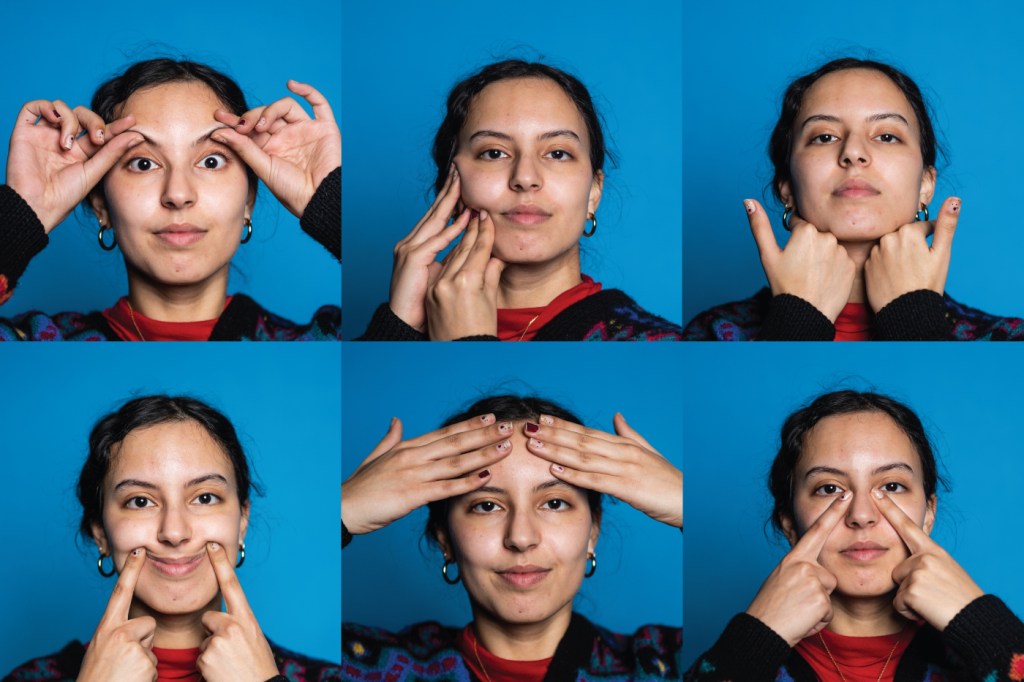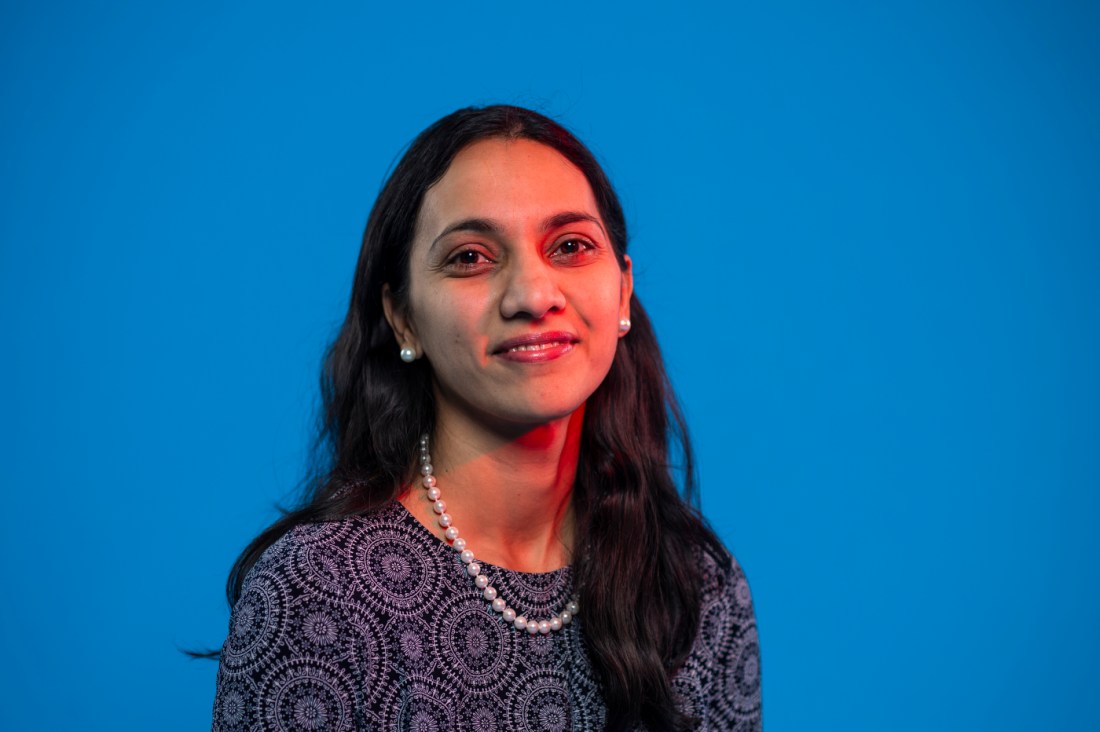Face yoga is taking TikTok by storm — but does it work?

With more than 2 billion views on TikTok alone, face yoga (#faceyoga) is the latest anti-aging practice to capture attention on social media.
The promise of relaxing wrinkles and lifting cheeks and jowls without resorting to more invasive and expensive procedures such as Botox injections has immense appeal for individuals looking to restore a youthful glow and a firm jawline on a budget.
Danielle Collins, a well-known face yoga instructor, says on her website that face yoga “focuses on toning and relaxing our facial muscles for a natural holistic facelift.”
But does it work?
So far the scientific evidence on whether a daily routine of puckering, puffing and massaging one’s facial muscles will shave off the years is scant.
There has been little research into the topic, and one study that showed positive results for a group of middle-aged women was very small, with 16 participants over the course of 20 weeks.
Northeastern Global News talked to a physical therapy professor – who is also a yoga instructor – and a nurse who specializes in aesthetics about why face yoga can deliver a glow, at least in the short term, and if the effects are long lasting.
Don’t call it yoga
Whatever its benefits or drawbacks, face yoga is not actually yoga, in the traditional sense, says Neha Gothe, an associate professor at Northeastern who studies the health benefits of yoga and is a long-time practitioner.
There are many types of yoga, including ashtanga, kundalini and hatha, but “face yoga is not one of those documented,” Gothe says.
Featured Posts
Face yoga is a name for a series of exercises that stretch the facial muscles with the aim of strengthening them for a more youthful look.
On her website, Collins says, face yoga “can help diminish the appearance of fine lines and wrinkles whilst lifting our skin and promoting a youthful glow. By enjoying targeted facial exercises, acupressure and massage techniques, face yoga promotes increased blood circulation, collagen production and improved skin health.”
Gothe, who has a joint appointment in Northeastern’s departments of applied psychology and physical therapy, movement and rehabilitation science, says “face yoga actually has more parallels with massage and acupuncture. It’s massaging your face more than doing yoga.”
Massage can improve circulation and be responsible for the healthy glow reported by practitioners, she says.
Many forms of exercise as well as inverted yoga poses such as downward dog produce the same effect by pulling blood toward the face, Gothe says.
Little evidence, lots of testimonials
Testimonials to more lasting effects from face yoga abound, with people saying others noticed an improvement in their appearance after just a few weeks on sites such as the one for Happy Face Yoga DVDs.
Actor Gwyneth Paltrow’s website Goop has promoted the benefits of face yoga, and Meghan Markle, the Duchess of Sussex, told an interviewer in 2014 she used face yoga to sculpt her cheeks and jawline, according to an article in Business Insider.

So far there is little scientific evidence to judge the results by, although a small study of middle-aged women who did facial exercises for 20 weeks “seemed to improve mid-face and lower face fullness,” according to the JAMA Dermatology journal.
The article published in 2018 says further research is needed “to isolate the causes and effects of exercise-related changes” to see if they would be applicable to the general population.
Is there a downside to face yoga?
Jennifer Lisciotti, a graduate of Northeastern’s nursing program who provides aesthetic and cosmetic services, says some of the facial slimming results of face yoga might be temporary — the result of moving lymphatic fluid in the tissues so the face looks less puffy.
Face yoga is designed to address muscle, but “that’s just one part of the equation,” she says.
“As we age, we lose bone. We lose collagen and elastin in the skin. Fat pads in the cheeks shift downward. Tissues want to go down and inwards. Even the orbits of the eyes enlarge a bit and rotate downward and inward a little bit,” Lisciotti says.
Sandy Miranda, who owns Thumbtastic fitness and massage center in Falmouth, Massachusetts, says she incorporated face yoga into free online classes she taught during the early days of the COVID-19 pandemic.
“To be honest, it reminds me of my mom,” Miranda says. “She would go to the mirror every morning and do her vowels — A E I O U. She said: ‘It helps keep my skin tight.’”
“When I teach yoga on the beach, I add (face yoga) in sometimes,” Miranda says. “Maybe it does help.”
In any event, she says, “It was the most fun class I taught. We laughed together” at the facial contortions involved in the exercises.
Even people who swear by face yoga say it takes time to get results, which are more subtle than Botox or fillers.
But since it is relatively inexpensive to purchase a book or DVD about face yoga or to watch an instructional video online, many people are giving the facial exercises a shot — especially since there seems to be no negative health consequences.
Collins, one of the best-known face yoga instructors, also guides her followers in practicing positive affirmations, improving their posture and what she considers proper nutrition — which does not include foods high in content such as sodium that inclines people to puffiness.
With her holistic approach to self care, Collins says face yoga “has the added benefits of helping us feel good inside and enhancing our wellness.”
Future studies involving sizable numbers of participants and control groups may paint a more scientific picture of the benefits of face yoga.











